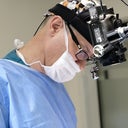Posted underRevision Rhinoplasty q&a
Nose too narrow after rhinoplasty, how do I add width/volume back? (Photos)
I got a rhinoplasty in the beginning of the year. The problem is that my nose is too narrow /small for my liking. It took a lot of my ethnic features. I’ve been looking into fillers / fat transfer to add some volume back but I’m scared of the risk. Also don’t want to be put under general anesthesia again. Also will tip dropping help my nostrils to flare out some ? Top pic is current.
Answers (5)
From board-certified doctors and trusted medical professionals
More Revision Rhinoplasty Questions
See all Revision Rhinoplasty Q&AWE SEND PRETTY
EMAILS
What’s trending? Who’s turning heads? Which TikTok myths need busting? We’ve got you. No fluff, no gatekeeping—just real talk. Get our free, unfiltered newsletter.



